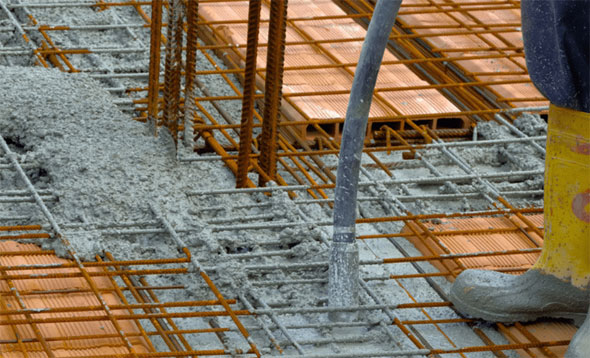Types of Concrete in Civil Engineering
- Concrete Cost Estimator
- Concrete Continuous Footing
- Landscape Bidding and Estimating
- Construction Cost Estimating
- Concrete and steel cost estimation
- Construction Cost Estimate Breakdown
- Construction Estimating Worksheet
- Home Construction Cost Estimate
- Estimate Pricing Sheet
- Sheet for General Contractor
- Construction Cost Estimate
- Labor Materials Cost Estimator
- Masonry Estimating Sheet
- Sheet for Building Contractor
- Construction Schedule Bar chart
- General Cost Estimator Sheet
- General Construction Estimate
- Building and Road Estimating Sheet
- Detailed expense estimates
- Door and Window Takeoff Sheet
- General Construction Cost Estimating Sheet

In this civil engineering article, you will get details about different types of concrete utilized in construction works.
Normal concrete: It is commonly used.
Lightweight concrete: With the inclusion of coarse light aggregate (extended clay aggregate), the insulating properties become superior and it can reduce strength as well as weight.
Aerated concrete: It is a type of lightweight concrete. Irrespective of aggregate, aerated concrete comprises of bubbles, which are developed through a chemical process and further enhance the quality of the insulation.
Heavy concrete: Specifically, heavy aggregate (e.g. barite, iron ore, steel granulate etc.) having high dry unit weight. Mainly applied for radiation protection.
Ultra high performance concrete (UHPC): In this type of cement, furnace cement is utilized in place of Portland cement. It has extreme strength and good stability. It facilitates lean design, cost savings and economic usage.
Water-impermeable concrete: It is the type of Concrete that contains a strong water-resistant capacity against water penetration. It is mainly utilized to seal some portions of the in the ground.
Waterproof concrete: It has similarity with water-impermeable concrete, inclusion of barriers.
Self-compacting concrete : In this type of concrete, plasticiser is included, no extra compacting is required, thinly pored surface and complex geometries.
Also Read: How to estimate different types of concrete work
Translucent concrete: Glass optical fibres are provided in the fine concrete. They create specific patterns, based on their density and structure, and cause the concrete to become translucent.
Refractory concrete: Resists temperatures ranging from 500 to 2000 °C
Recycled concrete: With the help of recycled materials, the aggregate is produced (e.g. building rubble).
Concrete screed: It contains small aggregate size to retain thin layers. It is specifically suitable for producing floor layers.
Pre-stressed concrete: Steel reinforcement is pre-stretched, which produces a strong compressive stress. The properties of concrete are utilized in a superior way to form more organized building parts. The stiffness resists major deflection even with large spans.
Textile concrete: It stands for a composite material containing low thickness and stgrong resistance capacity against compression and deflection. There are flexible forms through specific reinforcing materials.
Fibre concrete: Fibres are produced from plastic, glass fibre, carbon, natural fibres or similar.
Self-cleaning concrete: The surface is prepared with photo catalytically effective metal oxides or sulphides. The characteristics like the self-cleansing, pollutant disintegrating effect is obtained by light.
Besides, the surface should be super-hydrophobe (water repellent) or super-hydrophile (water-attractive).

- Application of concrete calculator
- Roofing Calculator can streamline the roof estimating process
- House construction cost calculator
- Engineering column design excel spreadsheet
- Material Estimating Sheet with Excel
- Materials List and Cost Estimate Worksheet
- Concrete Slab Estimating Calculator Sheet
- Common types of foundations for buildings
- Online calculation of construction materials
- Estimating with Excel for the Small Contractor
- Concrete Beam Design Spreadsheet
- Virtual Construction Management app for construction
- Autodesk’s Project Skyscraper
- Reed Construction’s Reed Insight
- Manage your construction project documentation
- Costimator, the popular cost estimating software
- On Center Software for construction professionals
- Free Construction Estimating Software
- Plumbing Calc Pro
- Cost Estimate Worksheet
- HVAC Piping Quantity Takeoff Worksheet
- Construction Estimating Software Sheet
- Estimate Cost Templates
- Construction Punch List
- Construction cost estimating template consisting estimating basic
- Gantt Chart Template for Excel
- Download Civil Engineering Spreadsheets with Verification
- The Building Advisor Estimating and Budgeting Worksheet
- Spreadsheet for design of concrete bridge
- Construction Estimating Software Free








